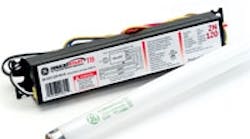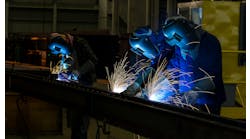Ford's latest lighting efficiency upgrade started in Connecticut when it requested a lighting audit of a 227,000-square-foot High Velocity Center.
In a subsequent report to Ford's facility management, New England Energy Management proposed replacing 650 existing HID lighting fixtures (400 watt and 1,000 watt metal halide and pulse-start metal halide lamps). The replacement: energy saving linear fluorescent lighting from GE Consumer & Industrial. Coupled with motion sensors that could reduce output (and energy use), savings as high as 50% are possible during periods of low activity.
"Following the audit, we knew that in this application, the right fluorescent lighting system could outperform the existing HID," says Scott Hinson, president, New England Energy Management, an energy service company.
Hinson's firm designed and submitted the efficiency project to Connecticut Light & Power's (CL&P) RFP Program on behalf of Ford. CL&P awarded a 75% incentive based on the high benefit-to-cost ratio score.
The energy savings of the HID-to-fluorescent retrofit at the Windsor Locks plant exceeded expectations, achieving a seven-month payback using CL&P's incentive rebate. Hinson says yearly energy savings tied to the Windsor Locks lighting retrofit will exceed $78,000 (651,283 kWh).
New England Energy installed six-lamp Optimum fixtures fitted with F32T8/XL/HL linear fluorescent lamps and UltraStart electronic ballasts from GE Consumer & Industrial.
UltraStart program-start ballasts match the high efficiency, energy savings and performance benefits of instant-start ballasts, while protecting lamp life in frequently switched applications (five or more switches per day). The lamp-ballast combination is an ideal system for use with occupancy sensors or other electronic controls, says Ron Paduchak, GE's linear fluorescent product manager.
The success at Ford's Windsor Locks plant has been extended to a total of 18 parts distribution facilities. Overall energy savings each year are projected to reach 20 million kWh. In addition to the efficiency gains, Ford expects the heightened color rendition to improve the "pick" rate. GE says the fluorescents also offer superior light levels, maintaining over 90% of lumens over the life of the lamp. It says HID lamps could lose as much as 60% of light output over the life of the lamp.
Ford's move standardizes lighting in its distribution facilities for easier maintenance. For example, with six lamps in each fixture independently circuited to the ballast, lamps can fail without affecting the entire fixture. And if a lamp fails, GE says the ballast automatically adjusts the current to the required level.
See Also



